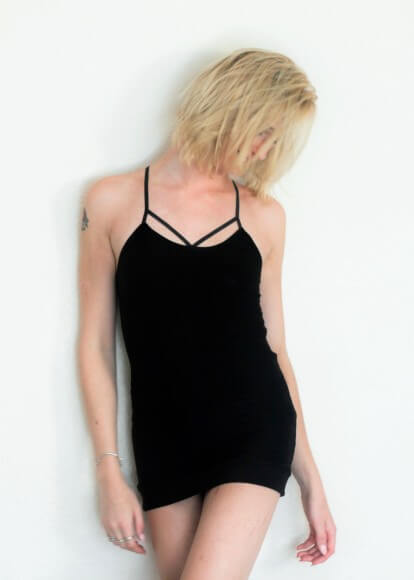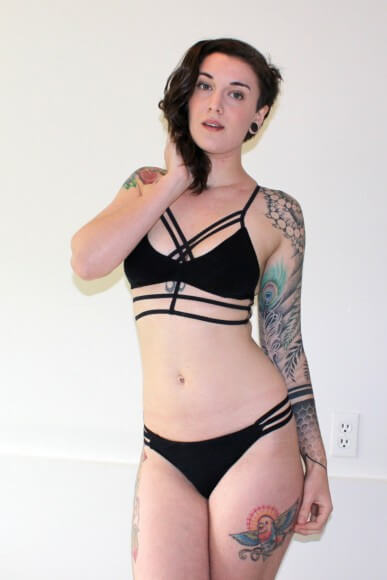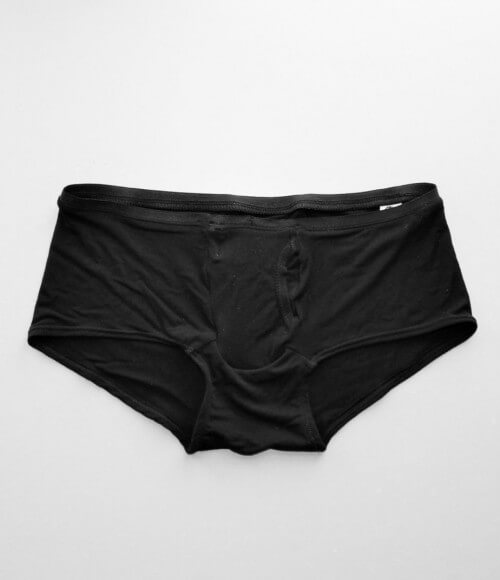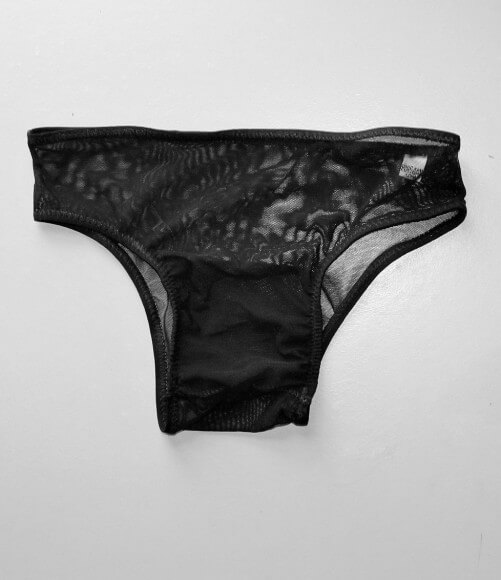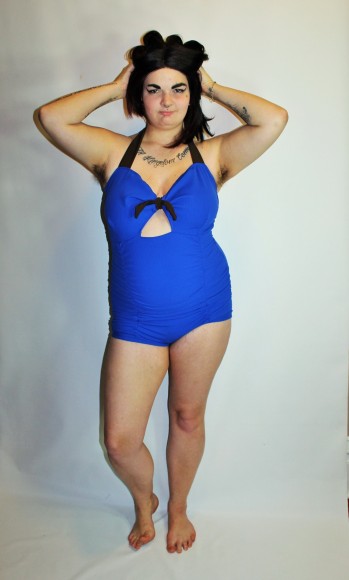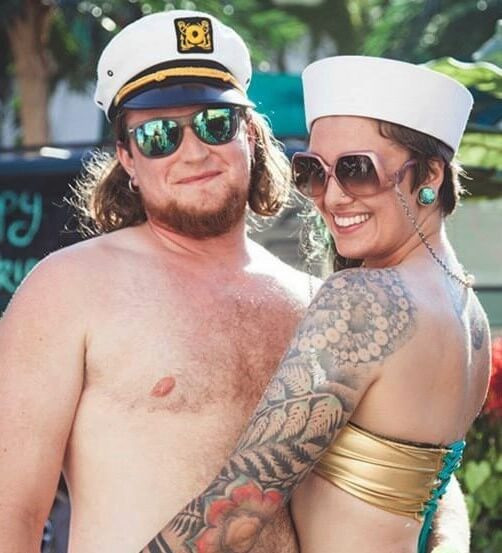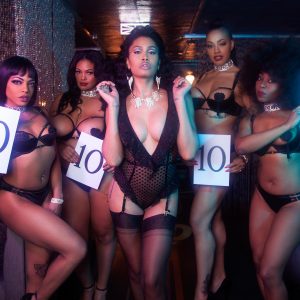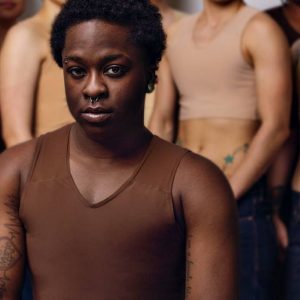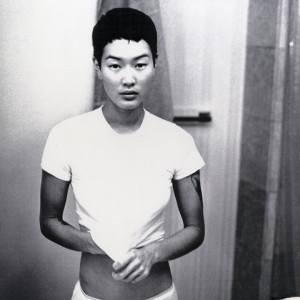Lingerie from the Heart: An Interview with Origami Customs
When I asked the question "where is the lingerie for trans women?" I hadn't yet heard of Origami Customs. And thank goodness I have: this online retailer designs lingerie and swimwear for a queer and trans audience. I recently had the opportunity to interview Rachel Hill, the designer/owner of Origami Customs. We talked about lingerie design, the trouble with bras, and the importance of heart-based business.
You say on your site that you began your design career with swimwear. When did you branch out into lingerie, and what was that decision like?
I started to experiment with turning my swimwear patterns into lingerie patterns when I moved from Utila, Honduras, to San Jose, Costa Rica. I wasn't near the water or scuba diving anymore, so I needed to create things that were more suited to a city environment. It was an easy transition as far as making the patterns, especially from swim bottoms to underwear. Bra fit was a whole other story, and it took a lot of time and research to just understand what the bra sizes meant! I also had to research fabrics and elastics. It took me a few years in total to be confident enough with the lingerie to offer it custom made. You really have to know the fit inside and out in order to custom make a bra.
In your FAQ you state that you’re a queer cis woman with a trans partner. Has his input shaped your business model in any notable ways?
My partner, Erik (he/his) was a huge force behind helping me to specialize in Trans fit and specific products for Trans and Non-Binary people (maybe there is a better umbrella term for all non-cis people, but that's what I'm using at the moment, I'm always learning and updating my vocabulary). Erik came to me just as we started dating, wondering if I could help him design some underthings for trans men. We came up with the prototype of a "cock sock" together, based on some he had seen people DIYing on the internet. It was a basic harness for a Stand-to-Pee device (STP) that would hold it in place underneath underwear. We wanted it to be bamboo for the antibacterial properties and because it's the softest fabric against the skin. Since then, Erik's been helping me with updating the original design and making the new (and very well-received) Packing Briefs, which are basically the original cock socks integrated into a bamboo short-stye brief.
Working on products for trans women has only been a venture since this winter, and Erik's been an incredible support in teaching me more about the community, the language to use and in getting me in touch with trans women who could give me feedback along the way.
He's going to be helping more with the business when we move to Montreal in the fall. Specifically, we want to have someone spending more time on trans-specific product development and work with local NGOs to find out how to get these products to the people who need them the most. He's really the one who encouraged me to take my business in a more heart-based direction and I'm so thankful.
One of your policies is that you offer to make any bottoms in your shop gaffs (panties for tucking) at no extra charge. I have two questions about this. First, what led to this policy? Second, as a business owner, how do you make this work?
As I mentioned, I've only been making products specific to trans women since this winter. But It just made sense --- instead of offering every product in a gaffed and non-gaff option, every product should be offered to any body type or any of the plethora of genders. I got rid of my gendered categories and now use more ambiguous ones to help people find the style they want, and then they just let me know which body type it's for. The way I see it, it's no different than combining "plus-sized" and "regular sized" into one fluid sizing spectrum with no separation or cap. I make all of my clothes for any body, period.
To answer the other question --- Origami Customs was never a business that I intended to make me rich and famous. In a nutshell, the popularity of the other "conventional" products allows me to offer the trans products at a fraction of normal tailoring costs. Since each piece is already being patterned and made individually based on the customer's measurements, adding the gaffing doesn't actually make it that much more complex.
What are your design influences?
I get a lot of influence from the fabrics themselves. I like to see how they move during different activities, from rock climbing to dancing, to see what kind of aesthetic I'm going to use when making the pieces. The tightness of a girdle mesh makes me want to design corseted pieces with elastic boning, like my longline mesh bra; whereas the flow and bounce of bamboo inspires me to make long tunic-like pieces that feel more foresty and fanciful.
In terms of other designers --- I pull from many influences. I am affected by the darker, bondage- style lingerie that's being so incredibly handmade right now. I also love the magic that I see in people's outfits at festivals, and things like fringe, shredding, and braiding have worked their way into my repertoire from this place of inspiration.
What’s your favorite piece you’ve designed or customized for a client?
I have to say that I'm biased, but one of the most heartfelt pieces that I made recently was for my mom. She suffered a spinal cord injury last year and lost the use of one of her legs. After a long, hard year of rehabilitation and treatment, she's just starting to walk again, and she needed a swimsuit. I was so honored to design her a piece that made her feel excited to go out again and use her body!
I've also been doing ongoing design work with a lovely trans woman in the US. She was one of the first women who worked with me to design specialty bras for large band/small cups. During the time we've been working together, she's started to use a new name and female pronouns. She told me that part of this was due to the lingerie that I've made for her, which gave her the confidence to start being more "out" in public. It made my heart swell!
What do you especially love about lingerie and swimwear as a medium?
I love the amount of trust that's involved in making pieces that are so intimate and yet hold so much value for each person. Sometimes it can be hard for someone, especially a trans or queer person, to talk about the very sacred and yet sometimes complicated needs of their body and how they want it to look and perform while in clothes. I try to be a compassionate listener to make sure that I understand fully how each piece needs to feel and work when it's being worn. I get so much pride from constructing an outfit that makes it easier for people to be in the world.
As a queer lingerie designer, what advice would you give to other people in the lingerie industry who would like to help queer and trans customers get their needs met?
I would tell them to take a look at what's being offered, but more importantly what's not on the market yet. There are still huge gaps in the products that are available, and I think that with some creative engineering and designing there could be some amazing places to take queer and trans lingerie.
I would also like to see the general shift in lingerie away from "men's" and "women's" categories, which would make it easier for queer and trans people to feel like they aren't necessarily shopping "outside" of the "right" category. A lot of lingerie that's currently being marketed to one gender is actually quite adaptable to many different bodies. It would also help to break down the boundaries between "Queer & Trans" vs. "All The Rest of the Companies." I don't see myself as specifically catering to any one body type, and people with varying gender identities/ orientations/ bodies may feel attracted to the same products.
What do you see in the future for Origami Customs, either immediately or in the long term?
Right now, I need to work on hiring employees! We are growing faster than I ever could have imagined and I can't wait to get more rad people on board to help me. Longer term, I'm just excited to see what moving to Montreal will bring to my designing and customer base. I'm ready to be inspired by the multiculturalism, history, and the many stories that the city has to tell.
I also can't wait to have my partner more involved in the business. With his insight, I hope to be able to research more queer and trans initiative and NGO's where I can bring my work. I envision setting up a subsidized program for undergarments for Trans people who cannot afford them. I'm looking forward to making the connections with other people who are doing similar work to find out what's needed within the community.





